Right out of college in 2019, Mathew Samuel, an industrial design graduate, joined SELCO Foundation — a nonprofit based out of Bengaluru working at the intersection of sustainable energy solutions and livelihoods for rural and urban communities. As someone interested in renewable energy, he wanted to gain a grassroots understanding of this space.
Speaking to The Better India, Mathew recalls, “I was working in the design team to develop products like solar-powered furnaces for blacksmiths, brass polishers, etc. While working at SELCO, I met my friend Naseer Sathyala, an electrical engineer, who was interning there. While there weren’t any project overlaps, we met frequently. During our discussions, we realised that even the most ardent climate enthusiast we knew hadn’t gone solar. That was our inflection point.”
“We asked ourselves if they couldn’t do it, what are the odds for regular people, for whom solar is often just a peripheral consideration? It became clear that there needed to be a much better way to make solar energy easy and accessible for everyone,” he adds.

What emerged was an idea for a startup based on the fact that white-collar professionals like them did not have access to a rooftop. Young professionals like Mathew and Naseer mostly lived in rented apartments and frequently moved between cities. As individuals, the economic factors and the challenges associated with installing solar panels were significant. However, they wanted to contribute to climate action and wanted an avenue to do it.
In the following year, Mathew joined hands with Naseer and his college batchmate Tarun Joseph, a specialist in UX Design, to establish ‘SundayGrids’ — a startup steeped in the concept of community solar.
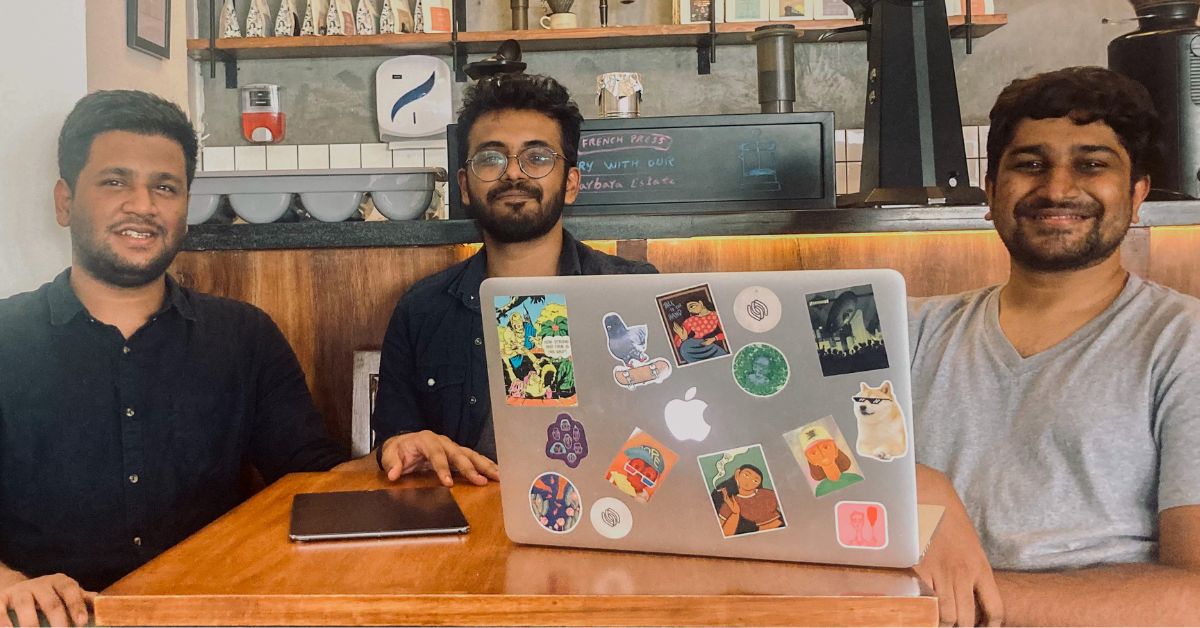
As Mathew notes, “Instead of solar panels being restricted to our rooftops, people can come together and participate as a collective in installing a large plant elsewhere to meet their requirements. And they get the benefits of solar savings on their power bills.”
It’s a straightforward idea.
For people residing in apartments with insufficient space to set up solar panels, SundayGrids assists you in acquiring solar panels that they set up in large spaces owned by commercial and industrial entities. The power produced by these remote panels is credited against your electricity bill, thus generating savings.
Establishing SundayGrids
“When the three of us came together in 2020, it wasn’t necessarily about starting a company; it was more about validating whether what we hoped to build was feasible and understanding the requirements to start building,” recalls Mathew.
In late 2020, they were admitted into the Launchpad programme of the NSRCEL — an incubation centre for startups run by the Indian Institute of Management, Bangalore (IIM-B). A programme spanning 100 days, it helps startups move “from an idea to the implementation stage”.
They also got into the incubation programme run by the Foundation for Innovation and Social Entrepreneurship (FISE) — “an initiative of Tata Trusts to promote socially relevant innovations and entrepreneurship with a mission to create large-scale sustainable social impact.”
“This connection led us to Tata Power, which helped us develop our model. While we had a fairly good understanding of solar from a hardware perspective, we weren’t sure of its operational and economic feasibility. They helped us structure our very first PPA (power purchase agreement) as well as find some of our early off-takers (sites to install panels), besides suggesting changes and validating our energy credits architecture,” explains Mathew.
Meanwhile, they built a 5 kW project on Naseer’s rooftop to serve as their minimum viable product (MVP) to attract early-adopter customers. “In 2022, we received funding from Rainmatter, an initiative by Zerodha, which helped us to work on compliance and refine the product architecture. By 2023, we opened our platform for community participation,” he adds.
Understanding community solar
Community solar projects across the globe are built in several ways.
A common approach is the virtual net metering model, which allows a unit of power generated from a solar plant to be mapped to a consumer’s metre and credited to their account. This means that for each unit of energy generated at the plant, a corresponding unit is discounted from the consumer’s power consumption, thereby reducing their electricity bill.
Another model is on-bill crediting, which operates on an ‘energy credits’ approach. Here, a certain discount rate is assigned for every unit of power generated. For instance, if the rate is Rs 5 per unit, and 100 units of power are generated in a month, then Rs 500 is discounted from the power bill.
“We chose the on-bill crediting model for two reasons. First, after studying how community solar grew initially in places like the United States and Europe, we found they were quite restricted by utility participation. Utilities (entities engaged in electricity generation and distribution) needed to actively agree to such models, which meant projects were locked into specific utility jurisdictions. For example, if you lived in a state that allowed community solar, your solar plant also needed to be within that same area. But we wanted to build a model that could scale nationally,” says Mathew.
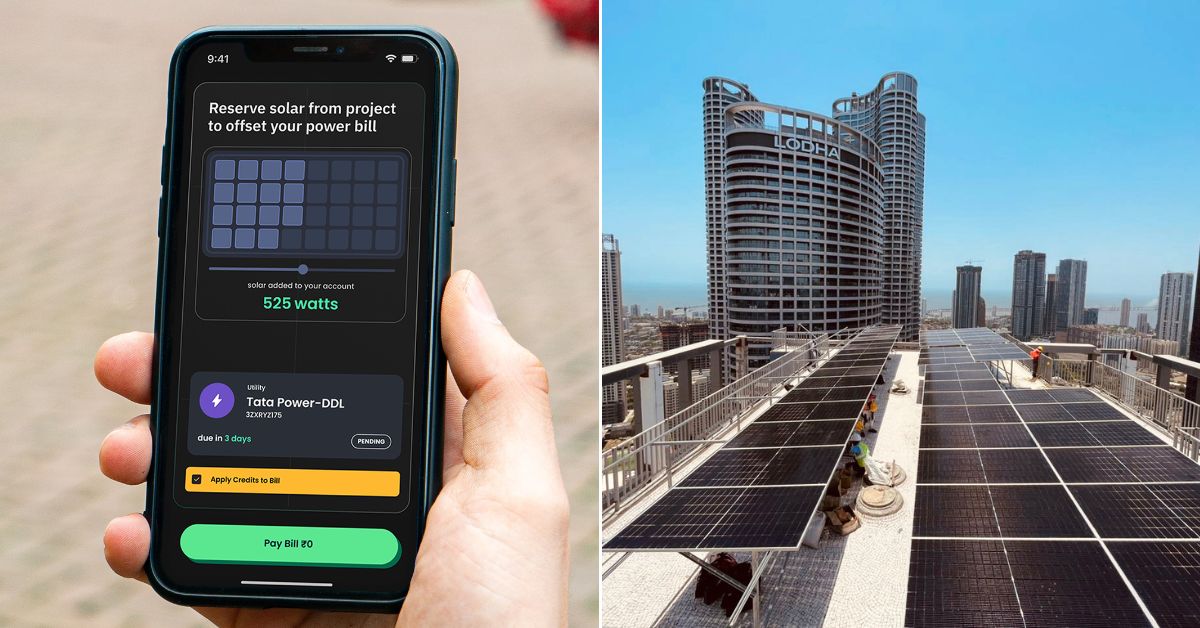
“The second reason was that we realised that in India, there was an opportunity to leapfrog these limitations. Over the last few years, the National Payments Corporation of India (NPCI) has developed digital public infrastructure like UPI, Fast-tag, and Bharat Billpay (BBPS), which enables nationwide utility aggregation — including water, broadband, and electricity. This became a one-stop solution for us to integrate with multiple utilities across the country,” he adds.
This approach allowed them to implement on-bill crediting in a way that could enable anyone across India to participate in community solar and ensure that the projects could be located anywhere across the country where third-party solar models are allowed.
Benefitting people who don’t have access to a rooftop
As Mathew notes, “For people living in apartment buildings, the challenges of going solar are multi-faceted. Firstly, they don’t have access to rooftop spaces. Additionally, going solar requires a long-term view — it typically lasts for a decade or two — and this needs to be factored into any economic decision.
The question then arises: will you be staying in the same place for that long? If you have to move, what happens to your solar?
This is where digital solar becomes really compelling. With the way we’ve built it, users can connect multiple utility accounts. For example, if you’re living in Mumbai today and need to move to Bengaluru tomorrow, you can easily reassign your solar credits to your new utility account and continue saving.”
“Another great aspect is that the entire process is end-to-end managed. As a user, you just need to pay a reservation fee, which allows us to assign a specific capacity for you. For instance, if the community solar plant is 100 kilowatts and your requirement is 2 kilowatts, we make that allocation for you. And if your energy consumption changes — whether it increases or decreases — you can adjust your reservation accordingly,” he adds.
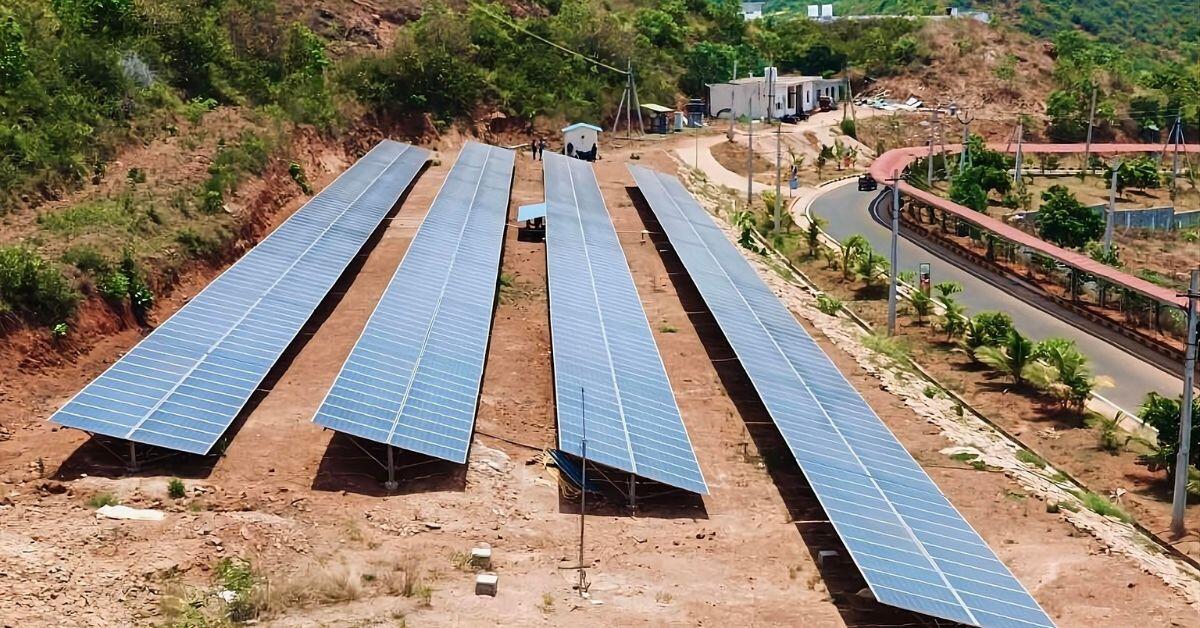
Moreover, SundayGrids and the solar developers participating in the platform fully manage the entire plant’s lifetime operations — including cleaning, monitoring, and replacing components. “Solar modules usually last around 25 years, but other parts like inverters need replacement every 10 years or so, and we take care of all of that. Insurance and other necessary protections are also handled on your behalf. For users, this is the most convenient, hassle-free way to get started with solar,” he claims.
Here’s a hypothetical breakdown of how it works:
- Let’s say we install a 100 kW plant at a commercial or industrial building. Once the plant is commissioned, a residential user living in an apartment reserves 2 kW of the 100 kW capacity for Rs 1 lakh.
- Each kilowatt of solar typically generates around 4 units per day, so the user’s reserved capacity would generate approximately 2 kW * 4 units/day * 30 days = 240 kWh per month.
- The commercial entity pays for this power at Rs 6 per unit, resulting in Rs 1440 of energy credits for the user every month (this continues recurrently for the next 15 years).
- If the user’s power bill for that month was Rs 1,500, and they pay it through the SundayGrids platform, their energy credits are applied, reducing the bill to just Rs 60.
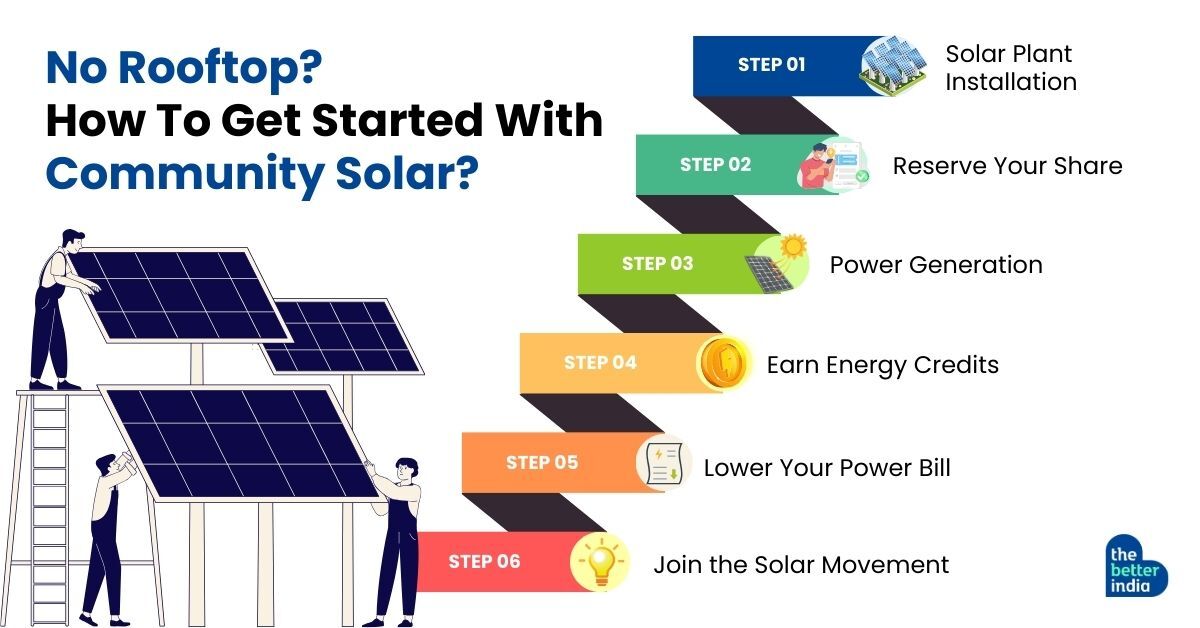
As Tarun goes on to claim, “An awesome benefit of the energy credits model is that since the sale of energy is tax-free, so is the solar savings on your electricity bills. At 11.5% XIRR, the savings yield from Digital Solar is higher than that of traditional rooftop solar, since instead of bespoke 5-10 kW installations, most of our projects are 100-200 kW large, which gives us economies of scale and users don’t have any operational expenses.
But why do commercial entities agree to provide the space to install these solar panels?
“Commercial entities pay a premium tariff for power compared to domestic rates. While domestic rates average around Rs 5.5 to Rs 6 per unit, commercial tariffs can range from Rs 15 to Rs 20 in some areas. This makes model adoption faster since we can offer to install the panels on their rooftop and lower their power bills by 30 to 40% at no upfront cost,” he notes.
“For them, it’s immediate savings from day one, and they receive end-to-end solar power management without needing to worry about the project. One of the incentives for these entities to choose our model is that we operate the plant for the first 15 years, after which we hand it over to them,” he adds.
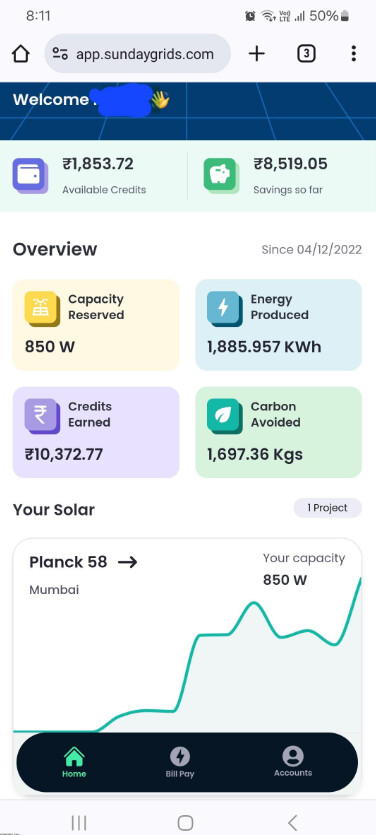
“All the power generated by the plant gets dispatched into the building’s metre. This means the commercial entity avoids paying the grid’s premium rate and instead pays us a discounted rate, closer to domestic tariff levels,” explains Naseer.
“Once the plant is commissioned, we integrate it into our platform, making it available to all our users. Users can then reserve capacity based on their power bill offset goals. When the capacity assigned to a user generates power, the commercial entity pays us for that power, and we convert that payment into energy credits for the user. These energy credits are linked to the user’s utility accounts to offset their power bill,” he says.
How does SundayGrids generate revenue?
They make a margin when users place a reservation. Solar developers also pay a recurring platform charge for listing and managing their projects.
As a user, the advantages of buying into a SundayGrids project are clear. Going on social media and different online platforms, there are a variety of takes on the system they have built. While some are sceptical of the savings/returns generated by buying into a commercial solar project, others see it as a means to contribute to the environment while also saving on their power bills.
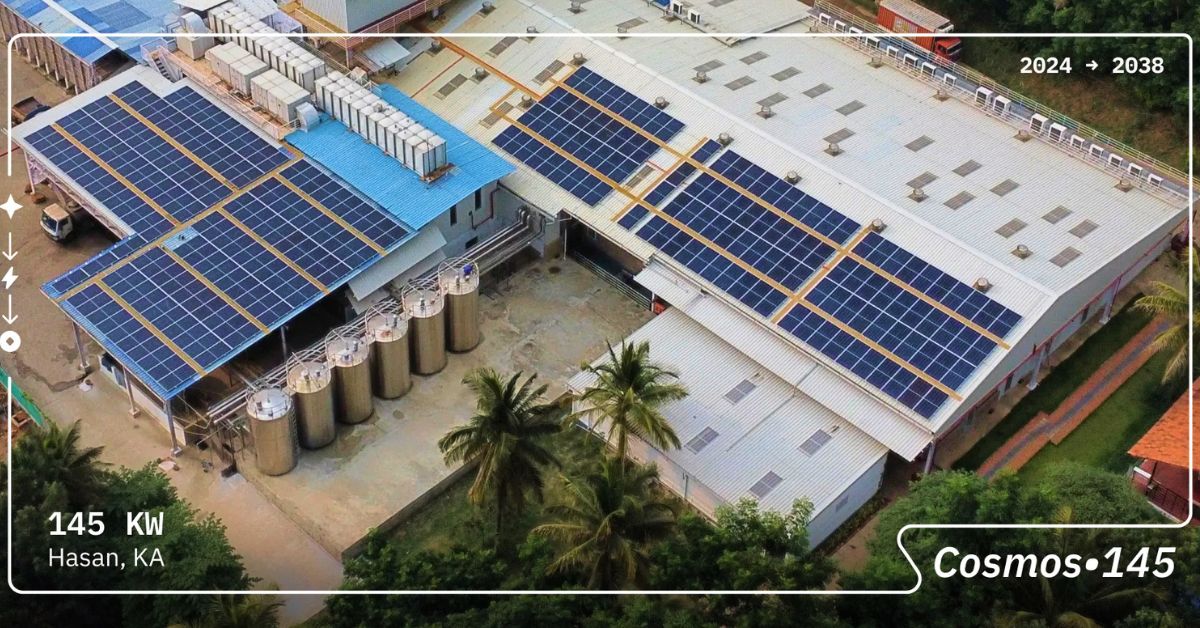
One EV user in Mumbai describes purchasing 0.85 kW of solar capacity in a project commissioned in the city, paying Rs 52,000. He notes, “If you are an EV (electric vehicle) owner and do not have access to a rooftop to install solar, then it makes sense to buy some wattage from SundayGrids. If you want to invest money for returns, this is not the right avenue.”
Meanwhile, Akshat Jain, a financial consultant on LinkedIn, took a trial of the Cosmos 145 community solar project near Bengaluru where he reserved 3,277W (3.2 kW) at Rs 1.6 lakh. While Akshat elaborates on the electricity bill savings, return on investment, and tax savings, he also elaborates on the potential risk, and that’s important to ascertain before buying in.
Growing leaps and bounds
Thus far, SundayGrids claims to have over 600 subscribers on their community solar plants and built around 800+ kW of capacity in Maharashtra, Karnataka, and Andhra Pradesh.
“So far, we’ve raised around Rs 2.8 crore in funding, with a significant portion coming from Rainmatter Capital, the incubator arm of Zerodha. One of our main objectives for the coming years is to onboard more solar capacity and raise awareness, helping more people understand the mechanisms and encouraging them to participate on our platform. We’re also working on other important aspects of community solar, such as peer-to-peer energy transaction networks in Bengaluru and virtual net metering in Mumbai. Our plan is to expand our product portfolio, starting with digital solar as the foundation, and then building out from there,” he adds.
(Edited by Pranita Bhat; Images courtesy SundayGrids)
